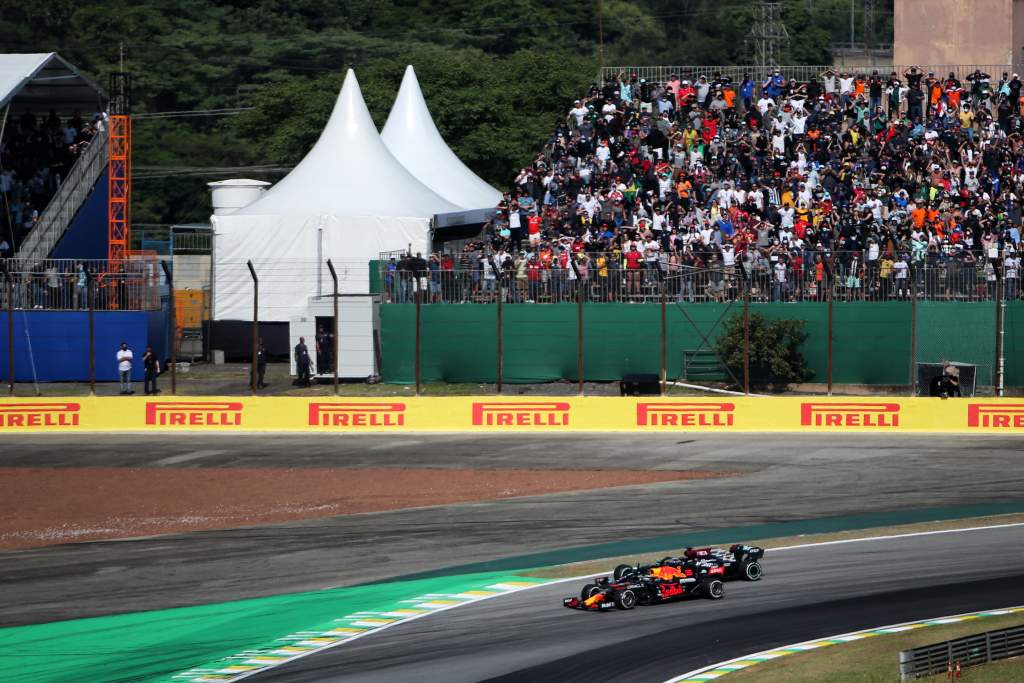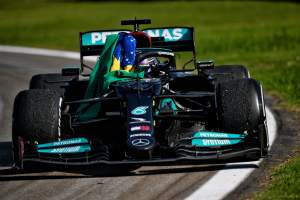Up Next

The fact that the Max Verstappen/Lewis Hamilton incident at Turn 4 was not investigated – even without the benefit of having Verstappen’s onboard handy to judge – certainly caused intrigue at the Brazilian Grand Prix.
Now that crucial piece of footage has been released, what does that mean for this incident and the championship battle?
Shortly after its release, Mercedes pursued its right to ask for a review into the near-collision, so what has and hasn’t been revealed by this valuable piece of evidence? Our writers investigate.
Why Verstappen didn’t open his steering
Mark Hughes
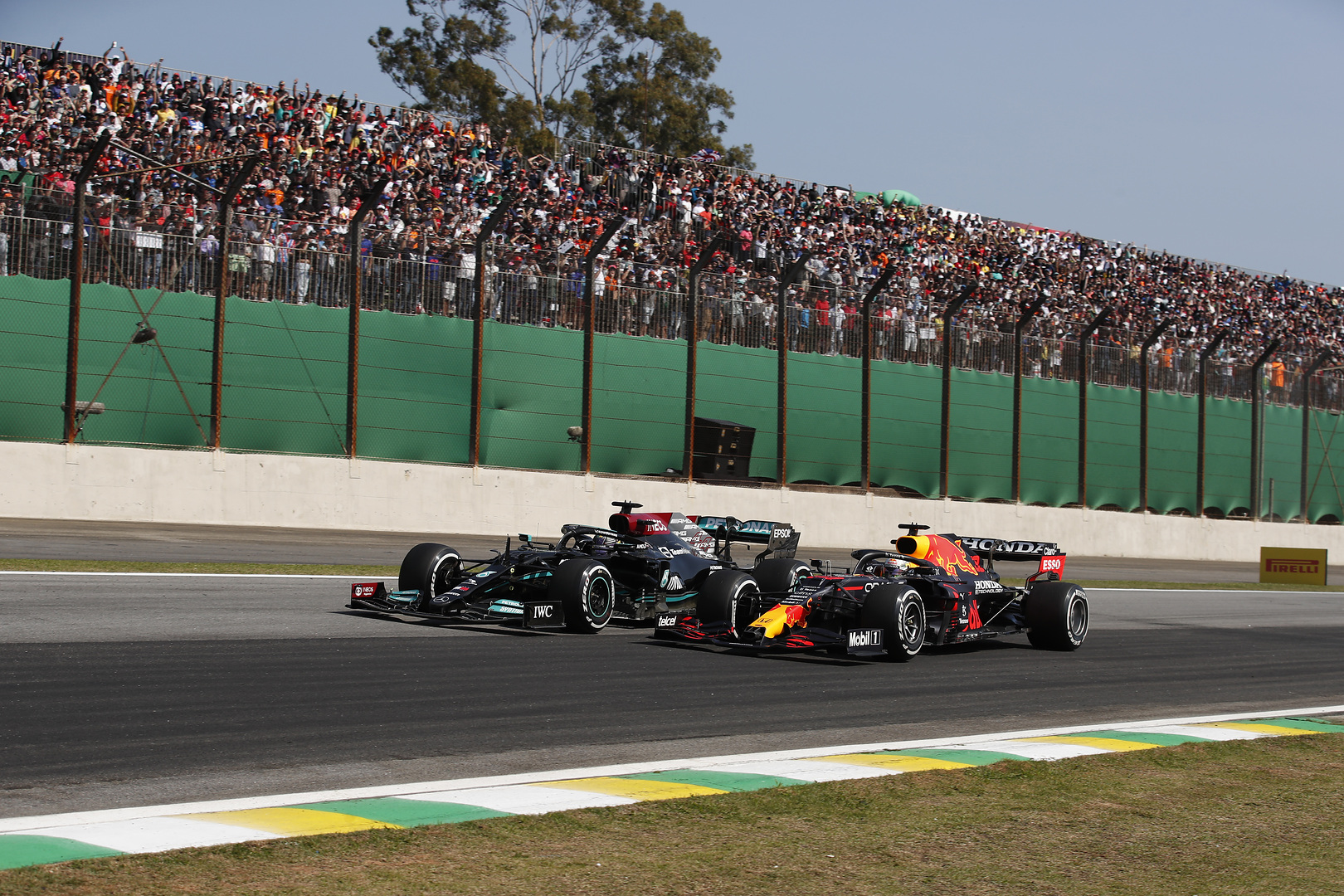
What the forward-facing camera footage reveals is that – rather than opening the steering on Hamilton, as had been widely believed – Verstappen simply doesn’t apply as much lock as needed to make the corner in the first place, so has no need to be opening out the steering.
This allows him to claim that he didn’t open the steering, but it amounts to much the same thing, albeit done in anticipation, rather than as a reaction.
The understeer Max said took him out there is not evident; he simply applies a very shallow degree of lock. He might then argue that was because he had to – because he’d taken too much speed in at such a shallow angle for the car to be able to accept any more lock without sliding wide.
It would be a hard thing to prove.
But the visual evidence from in-car tends to confirm it was just Verstappen deliberately running Hamilton out wide. Once upon a time that would have been just racing.
But now that the principle of precedent has muddied the waters, going by the stewards’ own previous positions on such matters it surely warranted a penalty.
Precedent wasn’t applied on this occasion. I hate the idea of precedent anyway because each racing situation is unique among an infinity of different situations. But if we accept it as just a necessary evil of modern racing, then by the – flawed – principle of precedent, it should have been a penalty.
Decision not to investigate is still baffling
Glenn Freeman
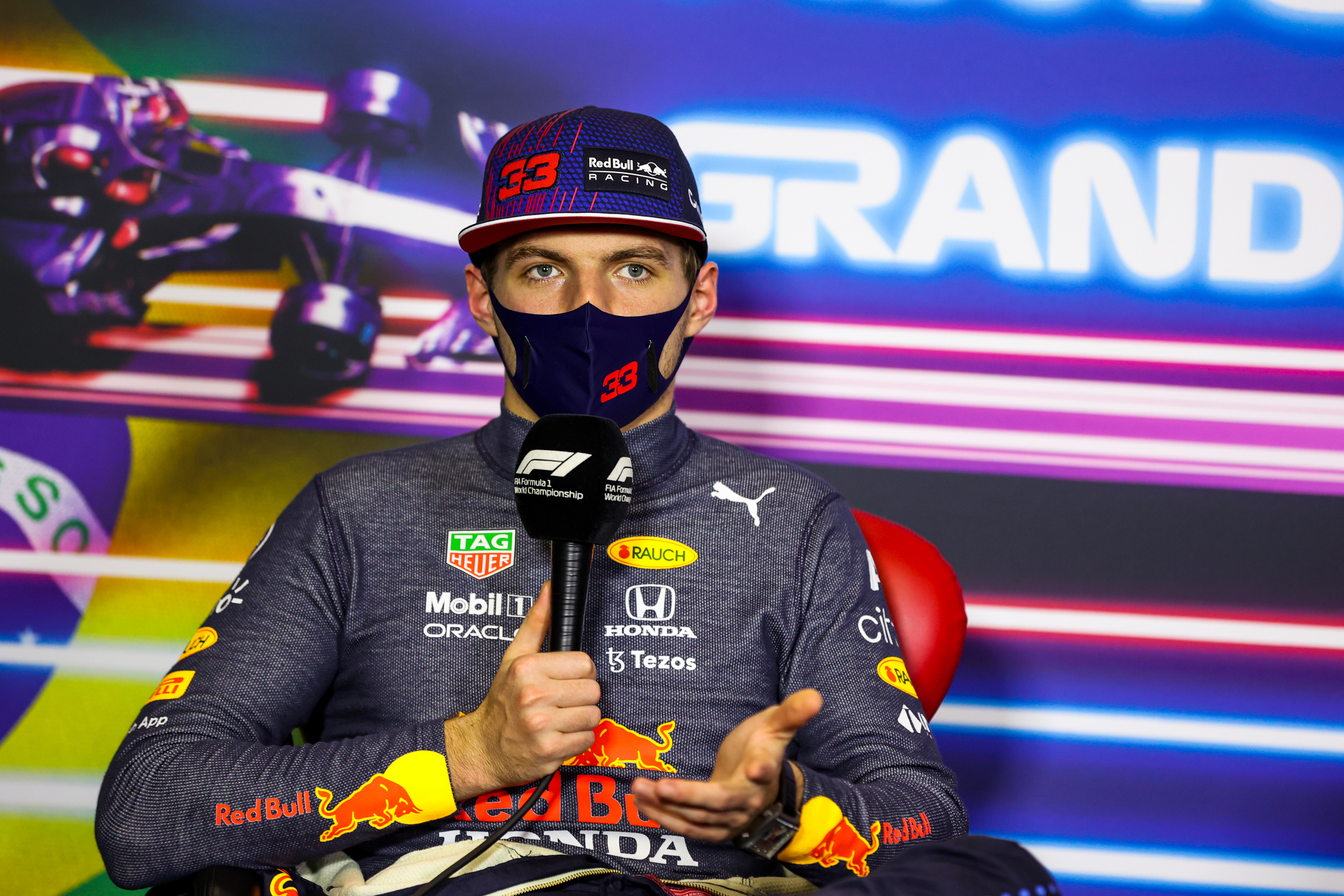
Regardless of what you think of the decision not to investigate the Turn 4 incident, how the stewards could come to that conclusion without feeling the need to at least see Verstappen’s onboard is baffling.
It’s also puzzling why in such a high-tech sport with superb TV facilities, it’s taken nearly 48 hours for this footage to emerge.
One argument that has come up a lot since the race is that the dynamics of this moment would have been very different if there was a gravel trap on the outside of Turn 4. Verstappen would have been more careful to not run himself off the road, and there’s also the likelihood – based on previous incidents this year – that if Hamilton had ended up being forced into a gravel trap, the stewards would have taken action.
It seems that modern F1 stewarding is heading down a route similar to football, where if someone doesn’t fall over, their opponent is less likely to be found guilty of a foul. In F1 there should be a difference between ‘let them race’ and ‘only penalise if the driver on the receiving end suffers badly enough’.
The gravel argument is more complicated than just demanding that all asphalt run-off is removed. F1 tracks have to run as a responsible business all year round, and when lower level championships race at these venues, or the tracks open for test days or track days with amateur drivers, cars regularly getting beached in gravel traps can cause havoc with schedules and track time – potentially causing financial repercussions.
Drivers regularly say they would prefer gravel traps to help enforce track limits. But is F1 willing to help with the finances and infrastructure required all year round just so for three days a year the best in the world have a physical deterrent to keep them inside the white lines? Unlikely.
Stewards must have believed Hamilton couldn’t make the corner
Scott Mitchell
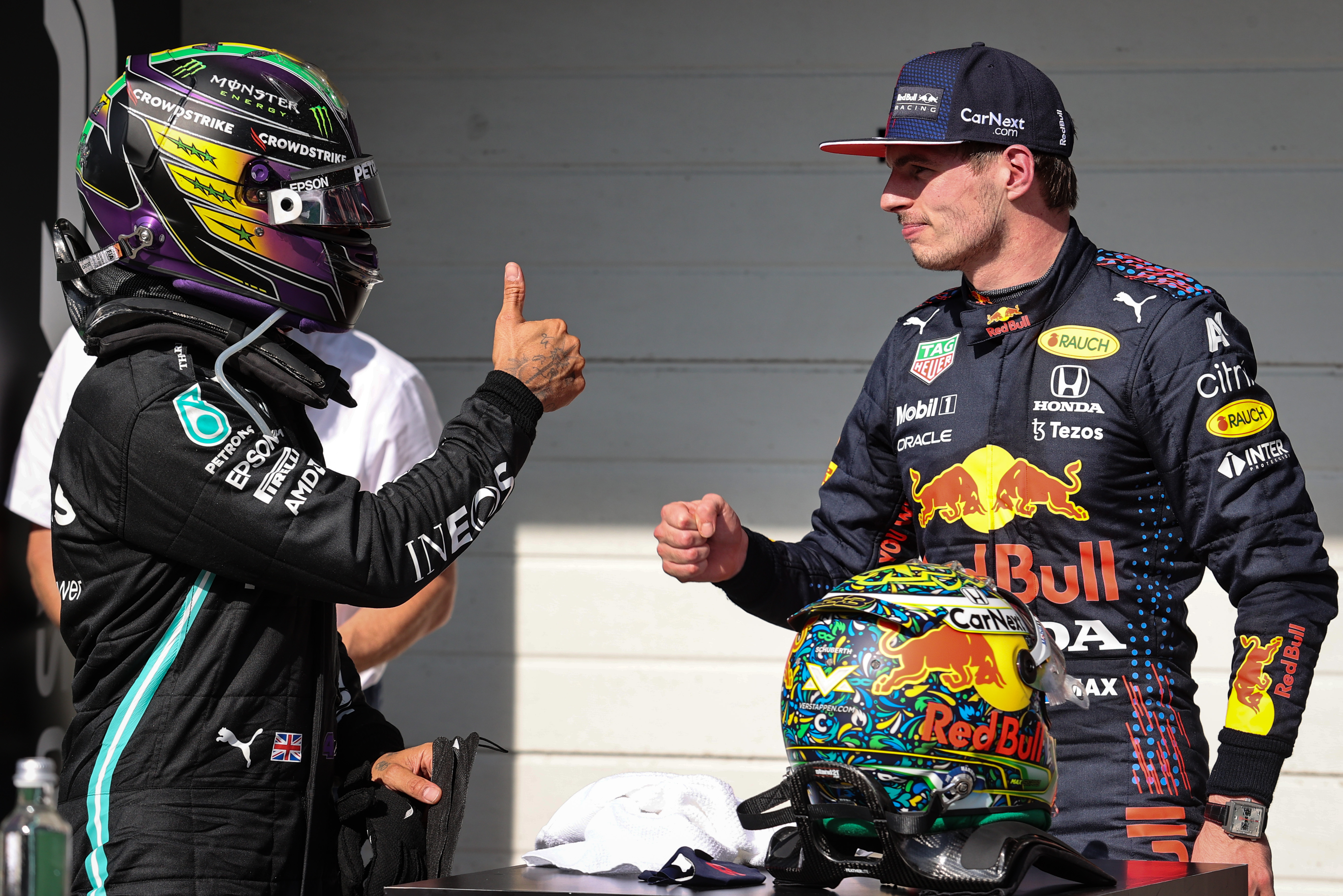
Seeing Verstappen’s onboard hasn’t changed my opinion I expressed on Sunday but it has reinforced a feeling that the stewards must have just taken the decision that Hamilton wasn’t going to make the corner.
It’s the only justification I can think of. Every clip of Turn 4 including Max’s onboard simply shows that he took too much speed into the corner to keep his car on track and Hamilton went off as well – in my view, only because of where Verstappen’s car was. The stewards must disagree.
There have been penalties in the past, even this year, for several drivers for very similar incidents – the cars are side by side on entry, the driver on the outside gets forced off-track on exit, the driver on the inside gets a penalty.
Nothing about Verstappen’s onboard really indicates why the stewards would say ‘oh yeah, this one’s fine’.
Especially as it can’t be argued he’s in control, because he goes off – unless the argument is he was in control and went off, in which case doesn’t that mean he drove off-track on purpose?
So, the only logical conclusion is that the stewards believe Verstappen’s actions had nothing to do with Hamilton going off. Hence the inaction.
How decisions are made, not incidents, should be reviewed post-race
Gary Anderson
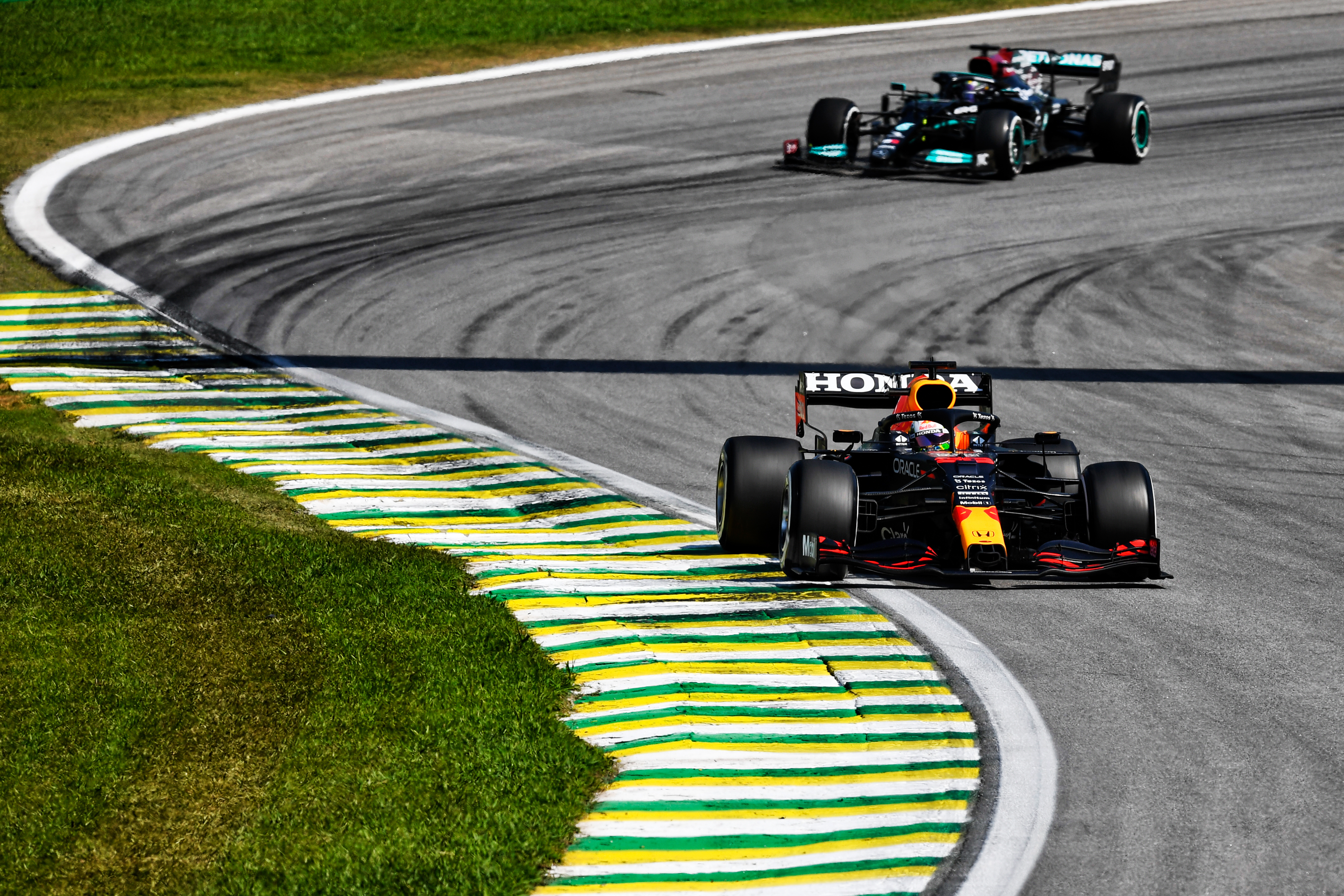
From what I can see Verstappen doesn’t reduce the steering lock but the main question for me is could he have tightened the steering lock?
I don’t think we should get to judging these things post-stewards’ decision or post-race. We all have a opinion on each individual incident but I think a decision by the stewards should be compulsory within something like five laps of any incident. If the indiscretion happens within the last five laps then post-race scrutiny is fine but that needs to be declared before the end of the race.
There will be mistakes made about what is or isn’t acceptable, but it is these decisions that need to be reviewed post race and not the actual incident.
The people who police the championship need to make sure that the system for making these decisions is robust enough to withstand scrutiny post race.
In his mind Verstappen knew that Hamilton would give him room as he was the one trailing in the points battle. Verstappen didn’t need to be too careful, he could leave that to Hamilton.
You could also look at the first corner when Verstappen pushed Valtteri Bottas off on the outside, exactly the same circumstances except he was able to keep his car on track.
A poor example has been set to the next generation
Jack Benyon
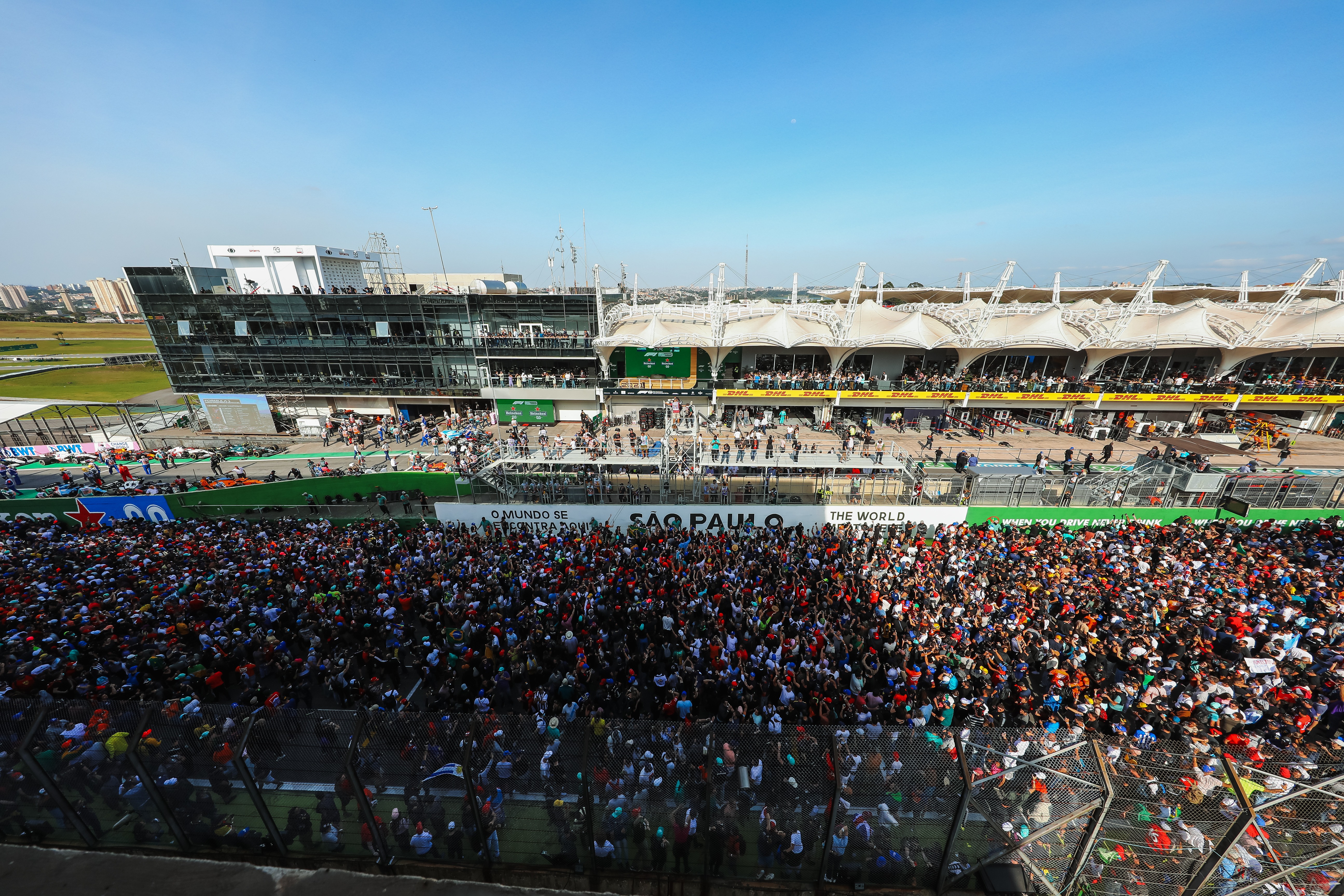
A particular line in the penalty document fining Hamilton for undoing his safety belts after finishing the Brazilian Grand Prix induced a wry smile on my face.
It said: “F1 drivers set the example for junior categories. It is critical that junior category drivers learn the importance of using all the safety devices of the car at all times.”
It’s interesting that F1 drivers are held accountable for their impact on junior drivers, but the sport as a whole does not appear to feel the same way about setting an example for its youth when it comes to policing its races.
The onboard footage from Verstappen’s car only reinforces that it should have been at least investigated as Hamilton is almost clear of Verstappen entering the braking zone. Whether Hamilton would have made the corner or not, that’s something the investigation – which never happened – should have determined.
Instead, in the midst of a massive boost in popularity for F1 and a great fight between Red Bull/Verstappen and Hamilton/Mercedes, the example has seemingly been set that it’s OK to push another driver off the road. Or even that it’s OK to get away with it. Perhaps this indiscretion will be righted if Mercedes gets its review.
Of course lower-tier racing series have their own stewards, but I’d hate to think that young drivers are watching that incident and think – because it’s not even been investigated – that is an acceptable way to race.
Luckily, in that incident the two cars didn’t touch. But racing at that speed, any instance of a car going properly off the road, not to mention two, ought to be investigated.
Heat of the moment defence, not pre-meditated and dirty
Sam Smith
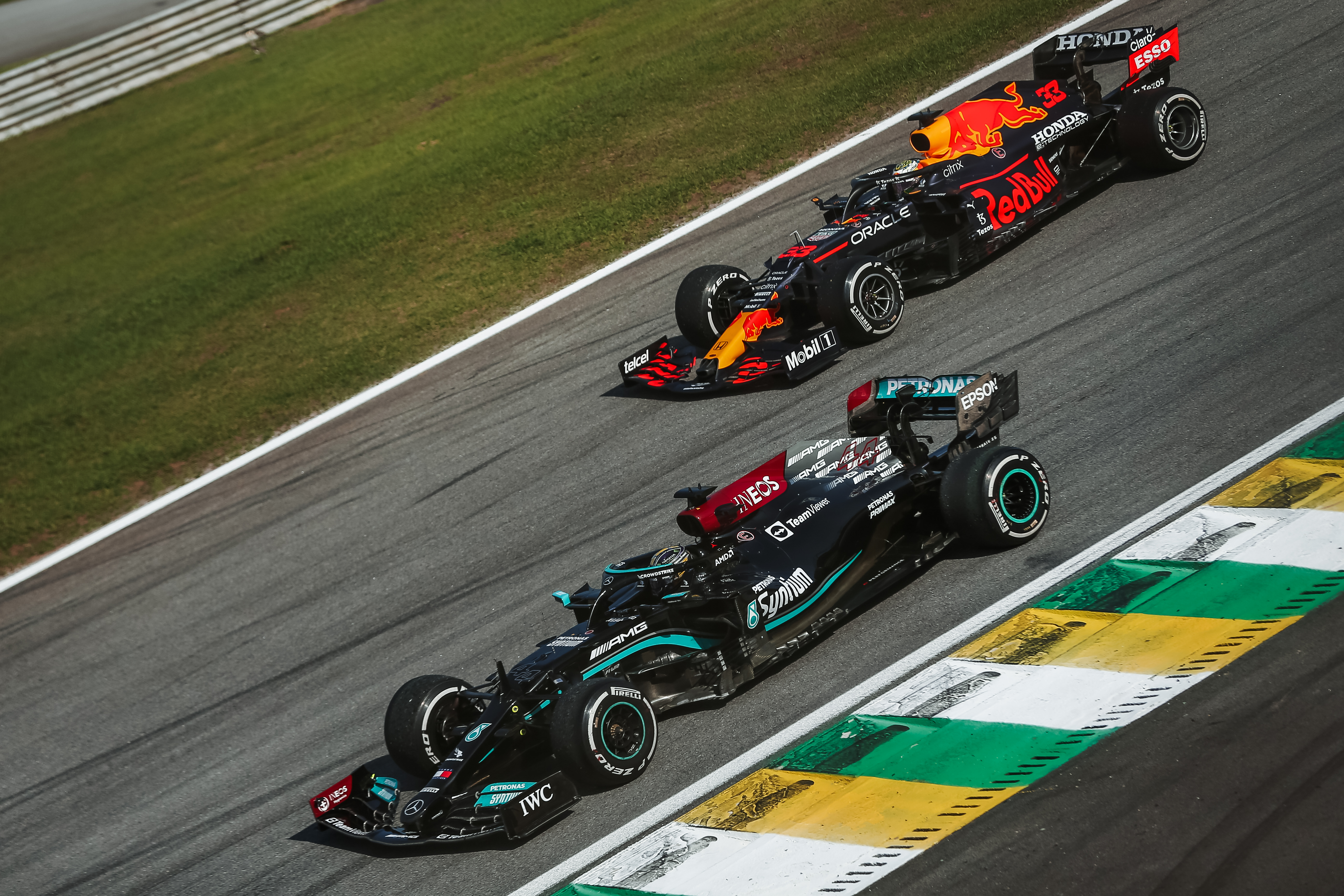
Angles and perspectives are everything in sport.
Whether you are volleying genius like footballer Marco van Basten or racing virtuoso’s like Max Verstappen and Lewis Hamilton, every slant, every incline and every trajectory of the Descida do Lago corner could in fact help or hinder a review of Sunday’s move.
The initial assumption by many, was, via freezeframe and slow-motion capture, that Verstappen opened his steering and casually drove Hamilton off the track.
This clearly wasn’t the case, more that the Red Bull driver simply unfurled one of the oldest defence moves in the book – the gentle glide off the brakes and use of the understeer to protect his position.
The onboard goes a long way to proving this and dispel some myths that he made a dirty and premeditated move to drive Hamilton off the track.
It was more a by-product of an honest attempt at defending the lead of a Grand Prix within the white-heat and white-light of one of the greatest title fights ever witnessed.
More worrying for me were Verstappen’s ludicrous weaving to ‘break the tow’ antics. At a place like Interlagos – narrow and compact – these games are to be slapped down straight away, and justly were by the FIA.


